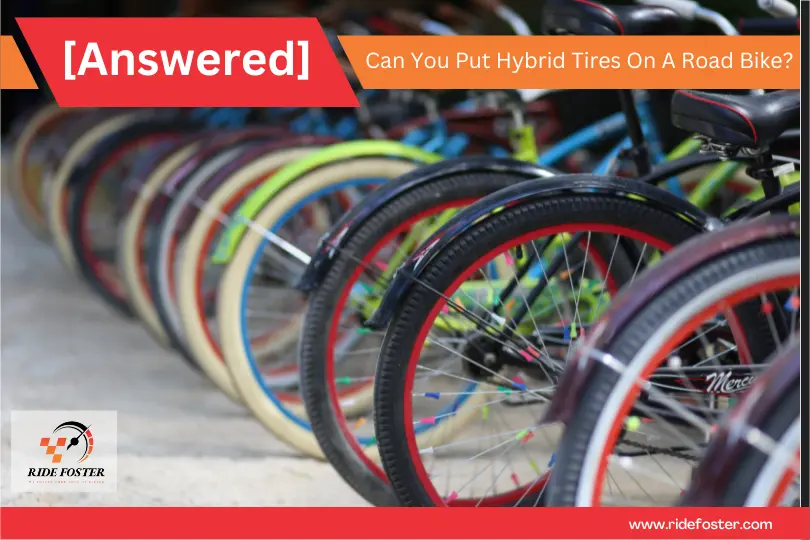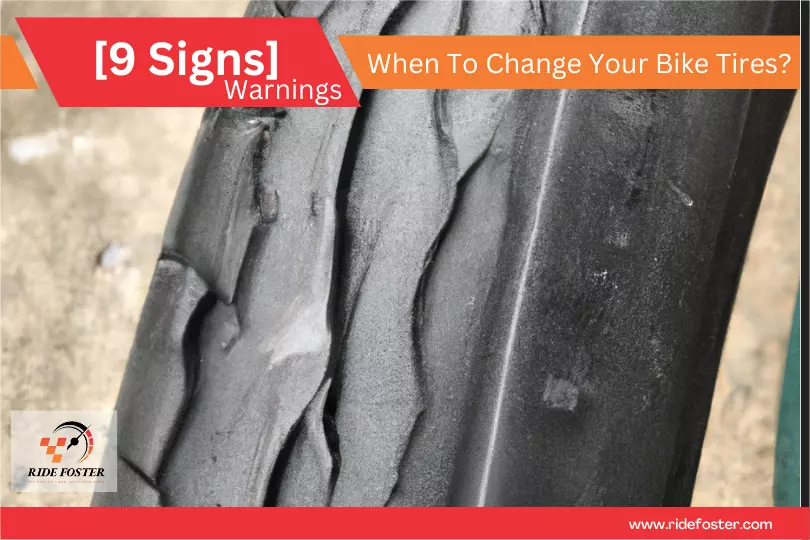
As an avid road cyclist, I know firsthand how important it is to have reliable tires.
Road bike tires are the only point of contact between the bike and the road, and their performance can greatly impact the overall riding experience.
But how long can we expect our road bike tires to last before needing replacement?
The answer is not a simple one, as there are several factors that can affect the lifespan of road bike tires.
In this article, I will dive into the different types of road bike tires, the maintenance practices that can extend their lifespan, and the signs that indicate it’s time for a replacement.
Whether you’re a seasoned cyclist or just starting out, understanding how long your road bike tires can last and how to properly care for them is essential for a safe and enjoyable ride.
Table of Contents
- 1 Key Takeaways
- 2 Factors that Affect Road Bike Tire Lifespan
- 3 Types of Road Bike Tires
- 4 How to Properly Maintain Your Tires
- 5 Signs that Your Tires Need Replacement
- 6 How to Choose the Right Replacement Tires
- 7 Tips for Extending the Lifespan of Your Tires
- 8 Common Mistakes to Avoid
- 9 Final Thoughts on Road Bike Tire Lifespan
- 10 Frequently Asked Questions
- 10.1 Can road bike tires be repaired or must they always be replaced when they wear out?
- 10.2 How does tire pressure affect the lifespan of road bike tires?
- 10.3 Are there any specific cleaning products or techniques that should be used to maintain road bike tires?
- 10.4 What is the typical warranty or guarantee for road bike tires?
- 10.5 Can using a different brand or type of tire affect the lifespan of other bike components, such as the chain or gears?
- 11 Conclusion
Key Takeaways
- The lifespan of road bike tires depends on factors such as tire pressure, road conditions, and riding style.
- Regular maintenance can help extend the lifespan of road bike tires.
- Signs that it’s time to replace road bike tires include wear indicators, visible damage, and low tire pressure.
- Proper tire maintenance, including checking tire pressure, preventing punctures, and maintaining proper storage, is essential for optimal performance and a safe and enjoyable riding experience.
Factors that Affect Road Bike Tire Lifespan
You’ll want to consider factors like tire pressure, road conditions, and riding style if you want your road bike tires to last as long as possible.
One of the most important factors that affect road bike tire durability is tire pressure.
Overinflating or underinflating your tires can lead to premature wear and tear.
Make sure to check your tire pressure regularly and keep it within the recommended range.
Another factor that can affect tire wear is the condition of the road surface.
Rough roads, gravel, and debris can cause small cuts and punctures in the tire tread, leading to faster wear.
Additionally, riding style can also play a role in tire lifespan.
Aggressive riding, sudden stops, and frequent braking can cause the tire to wear out faster than normal.
To extend the lifespan of your road bike tires, it’s important to be mindful of these factors and take steps to mitigate their impact.
Types of Road Bike Tires
Choosing the right road bike tire can greatly impact your cycling experience, making the ride smoother and more enjoyable.
There are different types of road bike tires available in the market, and each one has its own advantages and disadvantages.
Here are some types of road bike tires that you might want to consider:
- Tube vs tubeless: Tube tires are the traditional type of tires that require an inner tube to hold the air.
On the other hand, tubeless tires do not need an inner tube and instead rely on an airtight seal between the tire and the rim.
Tubeless tires are becoming more popular due to their ability to reduce punctures and provide a smoother ride.
- Clincher vs tubular: Clincher tires are the most common type of road bike tires and are easy to install and maintain.
They have a bead that hooks onto the rim and holds the inner tube inside.
On the other hand, tubular tires are glued onto a special rim and require more time and effort to install.
They are often used by professional riders due to their ability to provide better ride quality and lower rolling resistance.
Deciding on the type of road bike tire that best suits your needs depends on various factors such as the type of terrain you will be riding on, your budget, and your personal preferences.
It’s important to do your research and consult with experts to ensure that you get the right tire for your bike.
Knowing the different types of road bike tires available in the market can help you make an informed decision when it comes to choosing the right tire for your cycling needs.
From tube vs tubeless to clincher vs tubular, each type has its own benefits and drawbacks, so it’s essential to consider your specific needs before making a purchase.
Ultimately, investing in the right type of tire can help you achieve a smoother and more enjoyable ride.
How to Properly Maintain Your Tires
To ensure optimal performance and safety, it’s important to regularly maintain your road bike tires.
One of the most important aspects of tire maintenance is keeping the tire pressure at the recommended level.
This not only ensures a smoother ride but also prevents the tire from getting damaged or punctured.
It’s essential to check the tire pressure before every ride, especially after a long period of storage or non-use.
Another way to properly maintain your road bike tires is to prevent punctures.
This can be done by avoiding rough or uneven surfaces and staying away from debris on the road.
Additionally, using puncture-resistant tires or adding a tire liner can help reduce the risk of punctures.
It’s also important to regularly check the tires for any signs of wear or damage and to replace them when necessary.
By taking these steps, you can extend the lifespan of your road bike tires and ensure a safer and more enjoyable ride.
Signs that Your Tires Need Replacement
If your rides feel less smooth and you notice cracks or bulges on your tires, it may be time to replace them.
Tires play a crucial role in the performance and safety of your road bike, so it’s essential to know when it’s time for a new set.
Here are some signs that your tires need replacement:
- Tire wear indicators: Most road bike tires come with wear indicators, which are small grooves on the tire surface that indicate when the tire has worn down to a certain level.
If you can see the wear indicators, it’s time to replace the tire.
- Visible damage: Check your tires regularly for cuts, punctures, and bulges.
If you notice any of these, it’s best to replace the tire as soon as possible to avoid a blowout while riding.
- Checking tire pressure: Low tire pressure can cause premature wear and increase the risk of a flat tire.
Check your tire pressure regularly and fill it to the recommended level to ensure the longevity of your tires.
By regularly checking your tires for these signs and properly maintaining them, you can ensure a smooth and safe ride on your road bike.
Don’t wait until it’s too late to replace your tires and always prioritize your safety while riding.
How to Choose the Right Replacement Tires
When it comes to finding the perfect replacement tires for your road bike, it’s important to consider several factors to ensure optimal performance and safety.
One of the most critical considerations is choosing the right brand of tires.
With so many options available, it can be overwhelming to make a decision.
Some of the most popular brands of road bike tires include Continental, Schwalbe, and Michelin.
Each of these brands offers a wide range of tires with different features, so it’s important to do some research and compare them to find the best fit for your needs.
Another important consideration when choosing replacement tires for your road bike is tire width.
The width of your tire affects several aspects of your riding experience, including comfort, traction, and rolling resistance.
Generally, narrower tires are better for racing and higher speeds, while wider tires offer more stability and traction on rough or wet surfaces.
It’s essential to choose the right tire width for your specific needs and riding style.
To help you make an informed decision, refer to the table below for a breakdown of the most common tire widths and their recommended uses:
| Tire Width | Recommended Use |
|---|---|
| 23mm | Racing and Speed |
| 25mm | All-Around |
| 28mm | Comfort and Stability |
By considering these factors and doing some research, you can choose the perfect replacement tires for your road bike that will deliver optimal performance and safety.
Tips for Extending the Lifespan of Your Tires
One simple way to maximize the durability of your tires is by regularly performing basic maintenance tasks.
Proper tire storage is key to extending their lifespan.
When storing your road bike, keep the tires away from direct sunlight, heat, and moisture.
These elements can cause the rubber to degrade and dry out, leading to cracking and premature wear.
It’s best to store tires indoors in a cool, dry place, away from windows and direct sunlight.
Another important factor in tire longevity is maintaining proper tire pressure.
Underinflated tires can cause excess wear and tear on the tread, sidewalls, and other components of the tire.
Overinflated tires, on the other hand, can lead to a harsh ride and an increased risk of punctures or blowouts.
Check your tire pressure regularly, using a reliable tire gauge, and adjust as necessary to ensure optimal pressure levels.
By following these tips for tire storage and pressure maintenance, you can help extend the lifespan of your road bike tires and get the most out of your investment.
Common Mistakes to Avoid
Avoid making these mistakes to ensure your tires stay in top condition and keep you cruising smoothly.
One common mistake that people make is riding with improperly inflated tires.
This not only affects the performance of your bike, but it can also cause damage to the tires.
Riding on underinflated tires can cause excessive wear on the sidewalls, while overinflated tires can result in a bumpy and uncomfortable ride.
To avoid these issues, make sure to regularly check your tire pressure and adjust it according to the manufacturer’s recommendations.
Another mistake to avoid is neglecting to rotate your tires.
Just like the tires on your car, the tires on your road bike will wear unevenly over time.
By rotating your tires, you can ensure that they wear evenly and last longer.
A simple way to rotate your tires is to swap the front tire with the back tire every 500-1000 miles.
This will help to distribute the wear more evenly and extend the lifespan of your tires.
By avoiding these common mistakes and properly maintaining your tires through proper inflation and regular rotation, you can keep your road bike tires in top condition and enjoy a smooth and comfortable ride.
Final Thoughts on Road Bike Tire Lifespan
To get the most out of your road cycling experience, it’s important to keep in mind the importance of properly maintaining your tires and ensuring they are in top condition.
The lifespan of road bike tires can vary depending on a variety of factors, such as the quality of the tire and the riding conditions, but there are ways to prolong the life of your tires and ensure they provide optimal performance for as long as possible.
One way to prolong the life of your road bike tires is to regularly inspect them for wear and tear.
Look for any signs of cracks, cuts, or punctures on the tire surface, as well as any bald spots or uneven wear.
Additionally, it’s important to pay attention to the tire wear indicators, which are small raised bumps that run along the center of the tire.
When these bumps become level with the tire surface, it’s time to replace your tires to avoid a potential blowout or accident.
Other ways to maintain your tires include checking the tire pressure regularly, avoiding overloading your bike or riding on rough terrain, and storing your bike in a cool, dry place away from direct sunlight.
By taking these steps, you can ensure that your road bike tires not only last longer but also provide a safe and enjoyable riding experience.
Frequently Asked Questions
Can road bike tires be repaired or must they always be replaced when they wear out?
As a bike mechanic, I can tell you that road bike tires can be repaired in some cases, depending on the size and location of the puncture.
However, once the wear indicators are visible, it’s time to replace the tire.
How does tire pressure affect the lifespan of road bike tires?
Maintaining proper tire pressure on road bike tires is crucial for longevity.
Over-inflated or under-inflated tires can cause excessive wear and tear, leading to the need for frequent replacement.
Regular maintenance checks can prolong the life of the tires.
Are there any specific cleaning products or techniques that should be used to maintain road bike tires?
When it comes to maintaining road bike tires, it’s important to use the best cleaning techniques and recommended cleaning products.
Avoid harsh chemicals and abrasive tools that can damage the tire’s surface.
Instead, opt for gentle cleaners and a soft brush or cloth.
What is the typical warranty or guarantee for road bike tires?
When purchasing road bike tires, it’s important to check the warranty coverage and replacement options.
Most manufacturers offer a limited warranty, typically ranging from 90 days to 2 years, with options for replacement within that time frame.
Can using a different brand or type of tire affect the lifespan of other bike components, such as the chain or gears?
Using a different brand or type of tire can affect the durability of other bike components if brand compatibility is not considered.
Durability comparison between different tire brands should be taken into account before making any changes to the bike’s setup.
Related:
Conclusion
So, how long do road bike tires last?
The answer is not straightforward and depends on various factors.
The type of tire, the terrain, and how well you maintain them all play a role in determining the lifespan of your tires.
However, with proper care and maintenance, you can extend the life of your tires and avoid unnecessary replacements.
It’s important to remember that your tires are a crucial part of your bike, and neglecting them can result in decreased performance, safety hazards, and costly repairs.
By understanding the factors that affect tire lifespan and taking steps to properly maintain them, you can ensure that your tires will last as long as possible.
So, take the time to choose the right tires, regularly check for signs of wear and tear, and follow proper maintenance procedures to keep your tires in top condition.
Happy cycling!
Useful Links:


![Can You Put Gravel Tires On a Road Bike? [Pros & Cons] Can You Put Gravel Tires On a Road Bike](https://www.ridefoster.com/wp-content/uploads/2022/11/Can-You-Put-Gravel-Tires-On-a-Road-Bike.webp)



